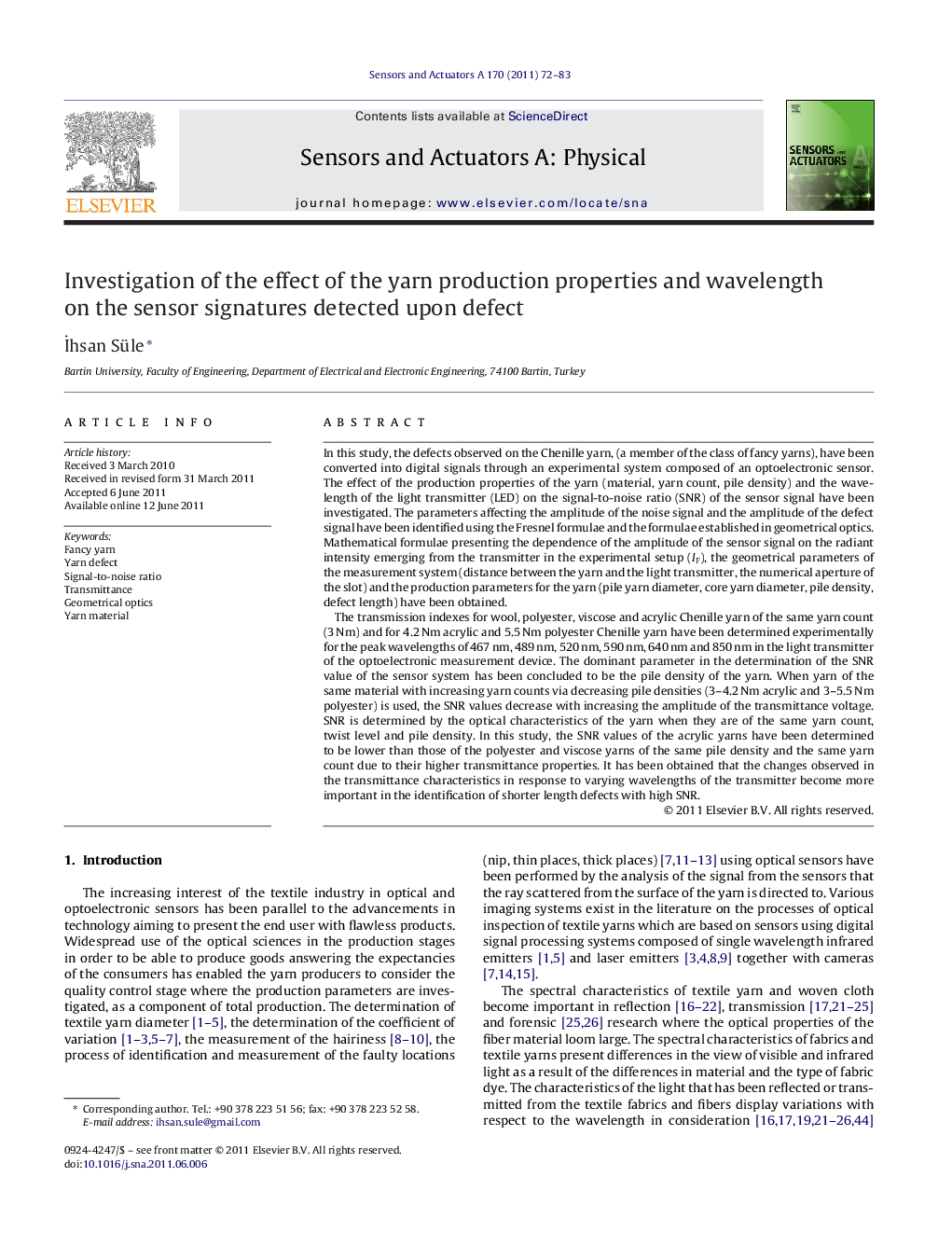| Article ID | Journal | Published Year | Pages | File Type |
|---|---|---|---|---|
| 739851 | Sensors and Actuators A: Physical | 2011 | 12 Pages |
In this study, the defects observed on the Chenille yarn, (a member of the class of fancy yarns), have been converted into digital signals through an experimental system composed of an optoelectronic sensor. The effect of the production properties of the yarn (material, yarn count, pile density) and the wavelength of the light transmitter (LED) on the signal-to-noise ratio (SNR) of the sensor signal have been investigated. The parameters affecting the amplitude of the noise signal and the amplitude of the defect signal have been identified using the Fresnel formulae and the formulae established in geometrical optics. Mathematical formulae presenting the dependence of the amplitude of the sensor signal on the radiant intensity emerging from the transmitter in the experimental setup (IF), the geometrical parameters of the measurement system (distance between the yarn and the light transmitter, the numerical aperture of the slot) and the production parameters for the yarn (pile yarn diameter, core yarn diameter, pile density, defect length) have been obtained.The transmission indexes for wool, polyester, viscose and acrylic Chenille yarn of the same yarn count (3 Nm) and for 4.2 Nm acrylic and 5.5 Nm polyester Chenille yarn have been determined experimentally for the peak wavelengths of 467 nm, 489 nm, 520 nm, 590 nm, 640 nm and 850 nm in the light transmitter of the optoelectronic measurement device. The dominant parameter in the determination of the SNR value of the sensor system has been concluded to be the pile density of the yarn. When yarn of the same material with increasing yarn counts via decreasing pile densities (3–4.2 Nm acrylic and 3–5.5 Nm polyester) is used, the SNR values decrease with increasing the amplitude of the transmittance voltage. SNR is determined by the optical characteristics of the yarn when they are of the same yarn count, twist level and pile density. In this study, the SNR values of the acrylic yarns have been determined to be lower than those of the polyester and viscose yarns of the same pile density and the same yarn count due to their higher transmittance properties. It has been obtained that the changes observed in the transmittance characteristics in response to varying wavelengths of the transmitter become more important in the identification of shorter length defects with high SNR.
